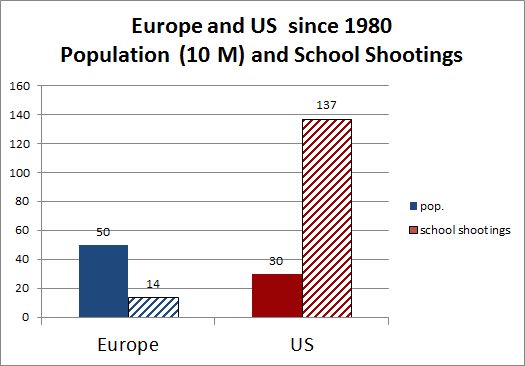
School Shootings: What’s Different About Europe?
October 28, 2014
Nicholas Walton
October 29, 2014Sex education in Denmark is about to shift focus after fertility rates dropped to the lowest in almost three decades.
After years of teaching kids how to use contraceptives, Sex and Society, the Nordic country’s biggest provider of sex education materials for schools, has changed its curriculum to encourage having babies under the rubric: “This is how you have children!”
Infertility is considered “an epidemic” in Denmark, said Bjarne Christensen, secretary general of the Copenhagen-based organization. “We see more and more couples needing to get assisted fertility treatment. We see a lot of people who don’t succeed in having children.”
Denmark’s fertility rate is at its lowest in more than a quarter of a century, with one in 10 children conceived only after treatment. Health professionals are urging the government to do more to address the declining birth rate and prevent it becoming a bigger demographic problem.
Declining fertility is affecting demographics across Europe, where the birthrate has hardly grown for two decades. The trend has profound effects not only on individuals but also on the economy and the outlook for standards of life, with fewer young people supporting older, retired populations.
Cigarettes, Wine
“We have for many years addressed the very important issues of how to avoid becoming pregnant, how to avoid sexual diseases, how they have a right to their own bodies, but we totally forgot to tell the kids that we cannot have children forever,” Soeren Ziebe, head of Copenhagen University Hospital’s fertility clinic, said by phone. “There is a biological limit.”
Part of the problem lies in the message sent to young adults to get advanced degrees and delay starting a family until they’ve finished their studies, Ziebe said. In the meantime, a woman’s fertility diminishes as her eggs, present since birth, “have tasted every cigarette and every glass of wine that she’s ever had,” he said.
Ziebe also says men need to know that “if they want to party till they’re 45, they’re going to miss the train, because when they wake up and want a family, their wives will no longer be able to conceive.”
Semen Quality
One in five Danish men and 12 percent of women who want to have children cannot, according to Dansk Fertilitetsselskab, a professional organization for health providers and researchers.
“There have been analyses of men’s semen quality and it’s actually been declining quite dramatically,” Christensen said.
The European Commission says it considers the growing gap between the number of young and old citizens one of Europe’s biggest challenges. According to Christensen at Sex and Society, the issue needs to be addressed at the school level if there is to be change.
“We hope to raise a discussion in society about how to advise young people,” said Christensen, whose group helps organize an annual Sex Week to focus schools’ attention on the subject. “It’s a problem that fertility in Denmark is reduced.”
Sex and Society’s new focus, unveiled on Sunday, includes information for school children explaining what fertility is, when the best times to have children may be, and what the effects of aging are.
Birth Rate
Health and sex ed are mandatory subjects in Denmark, with schools teaching children about puberty, gender roles and contraception from the sixth grade. Basic instruction can start at kindergarten level.
The non-profit group is also working with Denmark’s Environment Ministry on identifying factors that may depress birth rates, including chemicals used in products such as sun block and clothing.
According to Lillian Bondo, chairwoman of Denmark’s Association of Midwives, the government needs to do more to support young families, particularly those who are in school, so they don’t delay having children.
“The politicians shouldn’t make it impossible to make ends meet when you have your second or third child,” Bondo said.
Last year, 55,873 live births were reported in Denmark, according to the country’s statistics agency. That’s the lowest number since the late 1980s. In the European Union, the number of live births has stagnated at around 5 million a year since the mid-1990s, according to the European Commission. In the 1960s, more than 7 million children were born each year.
“We have a culture in Denmark where you tend to prolong the time to the first birth, and we are now passing 29 years, which means a lot of people have children a lot later,” Christensen said.
To contact the reporter on this story: Frances Schwartzkopff in Copenhagen at fschwartzko1@bloomberg.net
To contact the editors responsible for this story: Tasneem Hanfi Brogger at tbrogger@bloomberg.net Jonas Bergman

